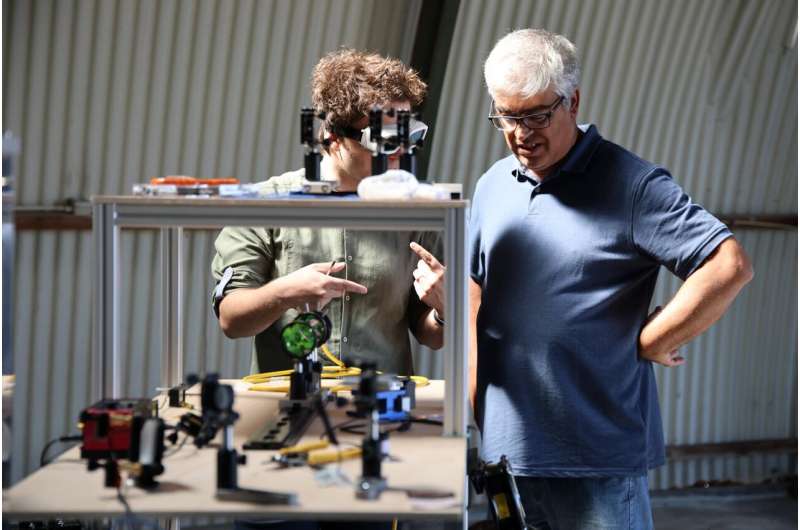This article has been reviewed according to Science X's editorial process and policies. Editors have highlighted the following attributes while ensuring the content's credibility:
fact-checked
proofread
Scientists develop high-power optic fiber laser to power nano satellites

The use of lasers in space is a reality. Even though radio waves have been the backbone of space communications for ages, the demand to convey more data, in a faster way, made these lighter, more flexible, and more secure infrared rays (invisible to the human eye) the future of space communications.
Recently, WipTherm, a European project dedicated to the development of pioneering solutions for wireless energy transfer in the field of microsatellite power for space exploration, has ended. And the Institute for Systems and Computer Engineering, Technology and Science (INESC TEC), one of the five partners of the project, focused on developing a high-power optic fiber laser. The Institute of Physics for Advanced Materials, Nanotechnology and Photonics (IFIMUP) and The Faculty of Science, University of Porto (FCUP) were the entities in charge of coordinating the project.
The team of researchers demonstrated the solution at an air base in Aveiro, a city on the Portuguese west coast. Orlando Frazão, researcher at INESC TEC Center for Applied Photonics (CAP), made "a very positive assessment" of the project's results. "We were able to increase our knowledge of high-power lasers and develop new optic fiber lasers with several potential applications."
Lasers like the one developed by the Portuguese R&D Institute are particularly important in space exploration. Fiber optic communication, in which light is used to carry the signal—rather than electric current—is a relevant option in scenarios like space communications.
"Our role in the consortium focused on developing a high-power laser entirely in optical fiber, operating in a 1550-nanometer range, with a maximum power of 40 Watts. In addition, we designed a telescope capable of simultaneously lighting 27 thermoelectric sensors using an array of lenses," said the researcher and Professor at FCUP.
During the final demonstration of WipTherm, at the São Jacinto airbase, the researchers were able to achieve power outputs of 20 Watts to power the thermoelectric sensors. "Future developments may include converting these lasers into pulsed lasers to obtain powers close to kW," added Orlando Frazão.
"The main goal was to develop continuous emission lasers to obtain sufficient power and create a temperature gradient in the thermoelectric system. The use of lasers in space is a reality; however, lasers require increased care since they're instruments that can be used for military purposes. We are trying to understand which types of lasers and which features can be used for academic purposes or as commercial solutions," stated the researcher.
Lasers to power satellites
"Power" is one of the keywords of the project coordinated by the University of Porto. WipTherm's main goal was to create an innovative wireless energy transfer system to recharge the energy storage components used in CubeSat technologies (e.g. micro and nano satellites).
And that's crucial: with the advances in CubeSat technologies, energy demand in this market segment has also increased, requiring larger solar panels, efficient energy storage systems and other energy transfer and collection systems. During the demonstration, the team used a high-power laser to recharge a CubeSat. This very small satellite, equipped with thermoelectric sensors developed by IFIMUP, was able to absorb light at 1500 nanometers, thus increasing the charging efficiency.
According to Orlando Frazão, "it's still early" to understand the potential impact of the work developed within the scope of the project on the future of the industry. However, learning with WipTherm allows researchers to focus on a new European project, Transition. "In this new project, we have already included a business model for the idea of recharging using lasers," concluded Orlando Frazão.
Provided by INESC Brussels HUB




















